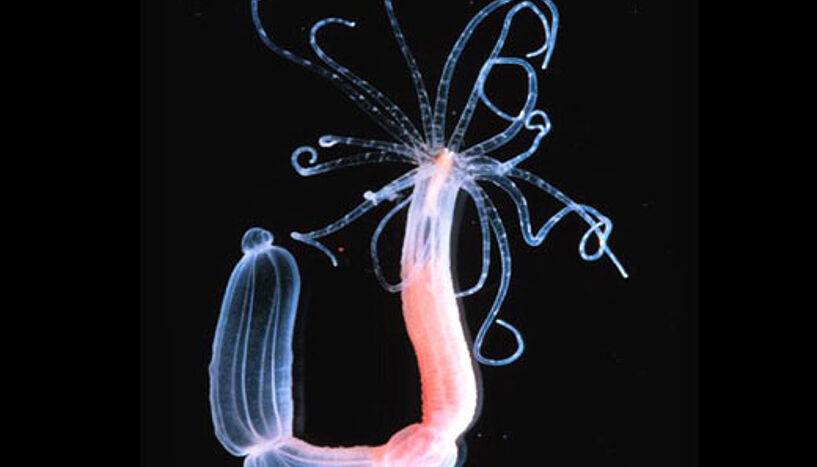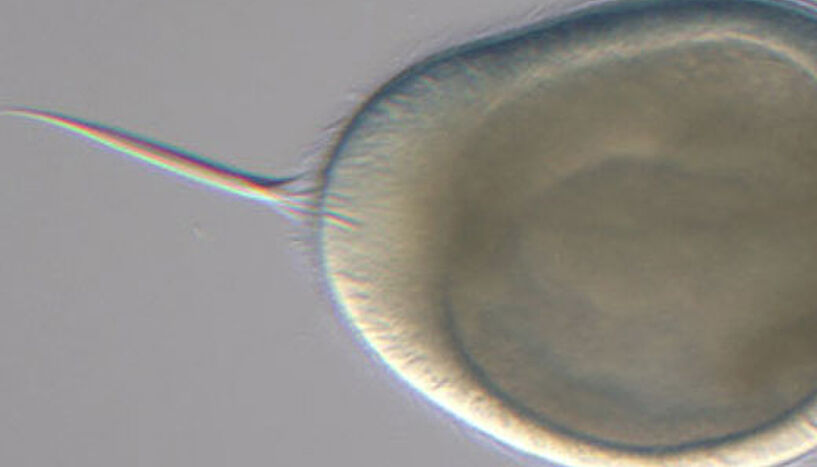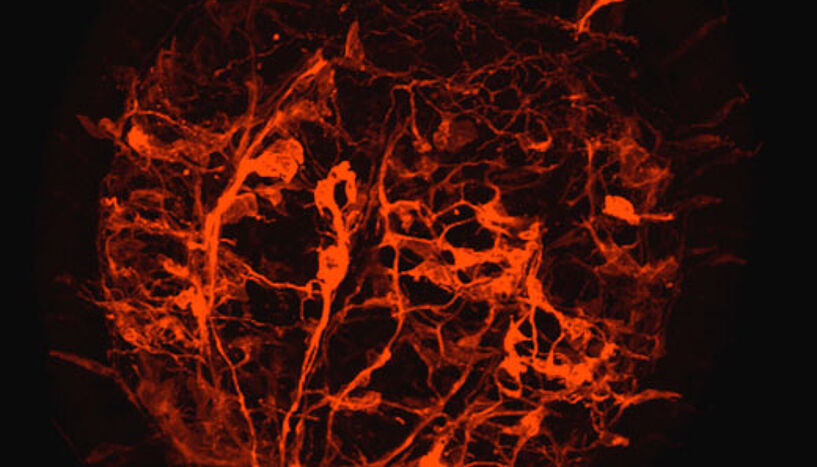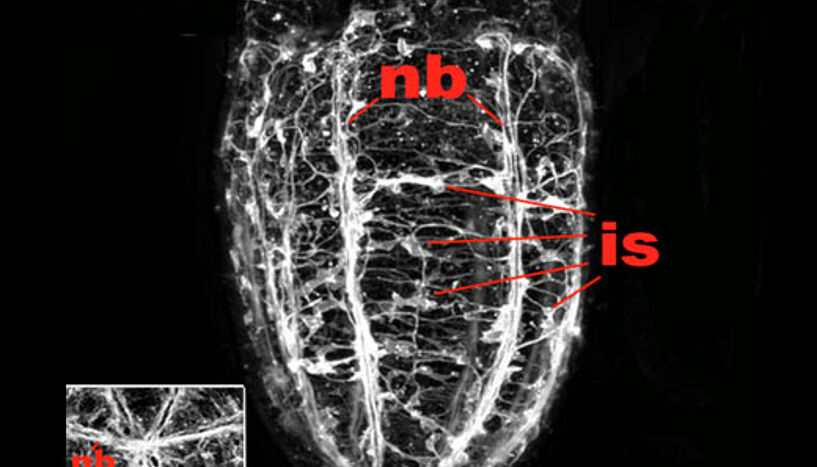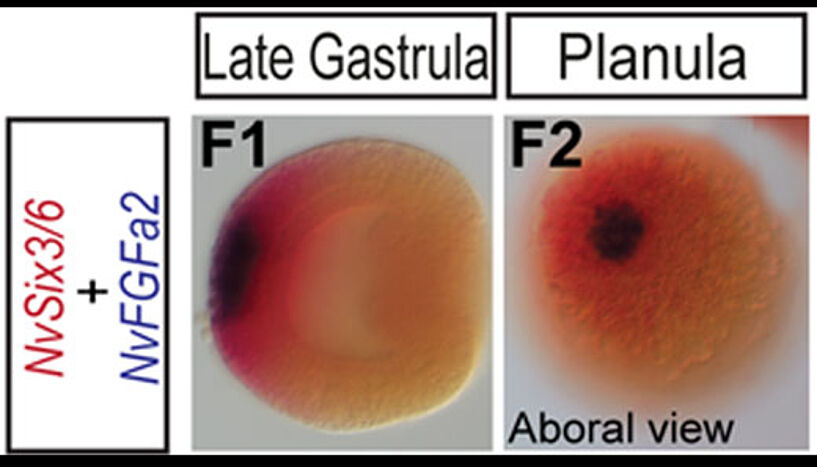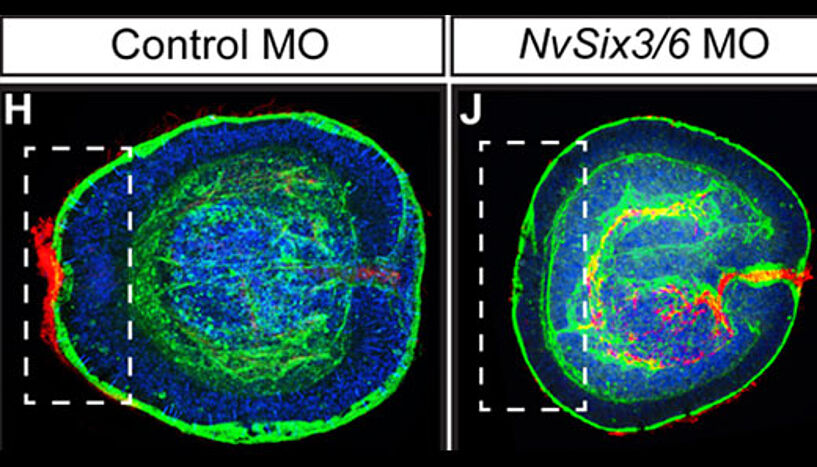The brainless origin of our head
20. Februar 2013A study by researchers from the Sars Centre in Bergen (Norway) and Ulrich Technau from the Dept of Molecular Evolution and Development (University Vienna) has shed new light on the evolutionary origin of the head. In a study published in the journal PLoS Biology they show that in a simple, brainless sea anemone, the same genes that control head development in higher animals regulate the development of the front end of the swimming larvae.
In many animals, the brain is located in a specific structure, the head, together with sensory organs and often together with the mouth. However, there are even more distantly related animals, which have a nervous system, but no brain, like sea anemones and corals.
In this collaborative study between a research group led by Fabian Rentzsch (Sars Centre Bergen) and Ulrich Technau from the Dept. of Molecular Evolution and Development the sea anemone Nematostella vectensis was used to find out if one of the ends of the sea anemone corresponds to the head of higher animals. To do this they studied the function of genes that control head development in higher animals during the embryonic development of the starlet sea anemone.
"Despite looking completely different, it has become clear over the last decade, that all animals have a similar repertoire of genes, including those that are required to make the head of higher animals", says Ulrich Technau from the Dept. of Molecular Evolution and Development.
Stands on its head
When the sea anemones are in the larval stage they swim and search for a suitable site for settlement and metamorphosis into a polyp. During this metamorphosis, it is the front end of the larva, which senses the environment and attaches to the ground, while the other end, transforms into the oral side of the animal with mouth and tentacles.
In contrast to everyone's expectation, the researchers found that the differentiation of the aboral (anterior) front of the sea anemone larva is governed by a hierarchy of genes, controlled by the upstream master control gene Six3/6. Notably, this gene as well its downstream dependent genes, also play a crucial role in setting up the field for making the brain of flies, fish and men. Hence, the function of the "head genes" is located at the end that corresponds to the "foot" of the adult animals. "The anterior end of the swimming larva carries their main sense organ, so at this stage it looks more like this might be their head", says Rentzsch, the leader of the Norwegian research team. And indeed, the "head genes" function on this side of the animals, yet they are not (yet) used to form a full brain.
Sea anemones and all higher animals, including humans, share a common brainless ancestor, which lived between 600 and 700 million years ago. By revealing the function of "head genes" in Nematostella, the authors believe that they now understand better how and from where the head and brain of higher animals evolved. Definitely, the gene network that formed a sensory centre has been evolved in this common ancestor some 600 million years ago.
"Based on the appearance of the adult animals, the aboral end of these animals has traditionally been called the foot and the upper end the head, while in fact it is basically turned upside down", explains Technau. "Or we..." he adds with a smile.
Publication in PLoS Biology:
Chiara Sinigaglia, Henriette Busengdal, Lucas Leclere, Ulrich Technau and Fabian Rentzsch (2013) The bilaterian head patterning gene six3/6 controls aboral domain development in a cnidarian. PLoS Biology
DOI: 10.1371/journal.pbio.1001488
Scientific Contact:
Dr. Ulrich Technau
Department of Molecular Evolution and Development
University of Vienna
1090 Wien, Althanstraße 14 (UZA I)
T +43-1-4277-570 00
M +43-664-60277-570 00
ulrich.technau(at)univie.ac.at
Press Contact:
Mag. Veronika Schallhart
Public Relations
Research and teaching
1010 Wien, Universitätsring 1
T +43-1-4277-175 30
M +43-664-60277-175 30
veronika.schallhart@univie.ac.at
Wissenschaftlicher Kontakt
Univ.-Prof. Dipl.-Biol. Dr. Ulrich Technau
Department für Neurowissenschaften und EntwicklungsbiologieUniversität Wien
1030 - Wien, Djerassiplatz 1
+43-1-4277-57000
+43-664-8175529
ulrich.technau@univie.ac.at
Rückfragehinweis
Mag. Veronika Schallhart
DLE ÖffentlichkeitsarbeitUniversität Wien
1010 - Wien, Universitätsring 1
+43-1-4277-17530
+43-664-8176793
veronika.schallhart@univie.ac.at
Downloads:
nematostella_01.jpg
Dateigröße: 708,84 KB
planula_01.tif
Dateigröße: 1,72 MB
Planula_ELAV_01.tif
Dateigröße: 5,6 MB
Primary_polyp_01.tif
Dateigröße: 803,3 KB
Six_3_FGFa2_01.tif
Dateigröße: 2,39 MB
six3_knockdown.tif
Dateigröße: 756,99 KB

